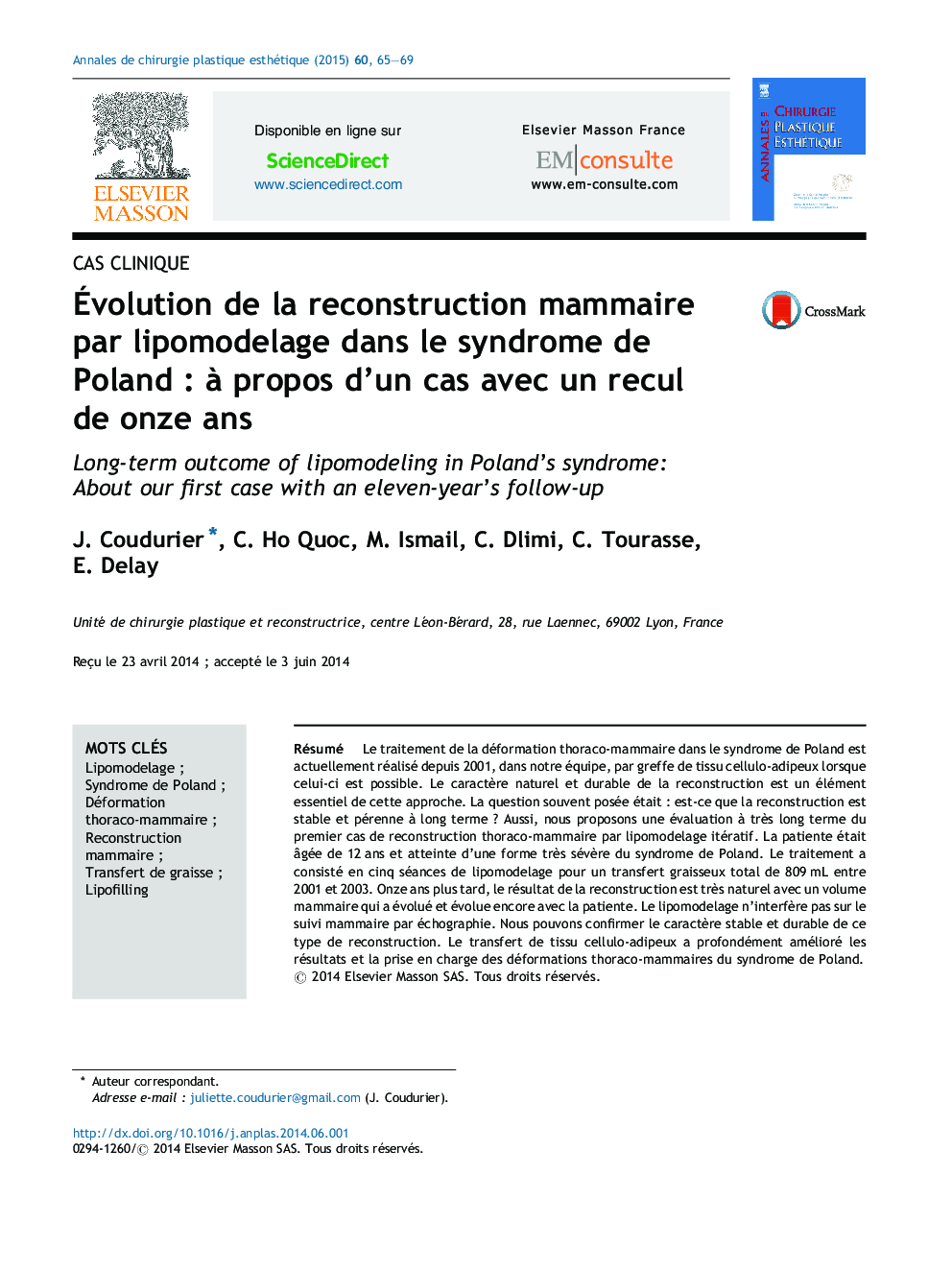| Article ID | Journal | Published Year | Pages | File Type |
|---|---|---|---|---|
| 3184581 | Annales de Chirurgie Plastique Esthétique | 2015 | 5 Pages |
RésuméLe traitement de la déformation thoraco-mammaire dans le syndrome de Poland est actuellement réalisé depuis 2001, dans notre équipe, par greffe de tissu cellulo-adipeux lorsque celui-ci est possible. Le caractère naturel et durable de la reconstruction est un élément essentiel de cette approche. La question souvent posée était : est-ce que la reconstruction est stable et pérenne à long terme ? Aussi, nous proposons une évaluation à très long terme du premier cas de reconstruction thoraco-mammaire par lipomodelage itératif. La patiente était âgée de 12 ans et atteinte d’une forme très sévère du syndrome de Poland. Le traitement a consisté en cinq séances de lipomodelage pour un transfert graisseux total de 809 mL entre 2001 et 2003. Onze ans plus tard, le résultat de la reconstruction est très naturel avec un volume mammaire qui a évolué et évolue encore avec la patiente. Le lipomodelage n’interfère pas sur le suivi mammaire par échographie. Nous pouvons confirmer le caractère stable et durable de ce type de reconstruction. Le transfert de tissu cellulo-adipeux a profondément amélioré les résultats et la prise en charge des déformations thoraco-mammaires du syndrome de Poland.
SummaryPoland's syndrome is a rare congenital malformation with thoracic and breast deformities very difficult to treat. Several techniques can be used involving, sometimes, implant insertion. Most of the classic techniques could not be used in this patient. Particularly, the transfer of the latissimus dorsi flap could not be performed because of the agenesis of the muscle. Lipomodeling is used, in our team, for breast reconstruction since 1998. This case was described and published one year after the end of the reconstruction in 2004. The immediate outcome appeared very satisfying and effective but some surgeons remained skeptical. An important question remains: what about the long-term efficiency and stability of the reconstruction? In this review, we report our first case of severe Poland's syndrome treated eleven years ago with lipomodeling. The patient was twelve years old. She had a severe form of Poland's syndrome. Five fat grafting sessions were performed between 2001 and 2003, for a total transfer of 809 ml. Today, outcome is very satisfying with a natural breast shape, consistency and sensitivity. An increase of volume in the reconstructed breast is noted. It is due to a rapid and significant weight gain by the patient. We performed two shorts movies describing this outcome one year and ten years after the reconstruction. It confirms the stability and the sustainability of the reconstruction. Lipomodeling does not interfere with breast ultrasound surveillance. Fat grafting deeply improved outcomes and management of thoracic and breast deformities in Poland's syndrome.
